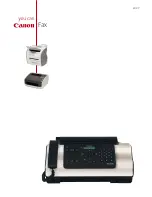
– 208 –
1-4) Material to be sewn is not
Remove the slack of the material to be sewn.
properly stretched.
1-5) Unstable needle thread clamp
5-A) Thread tends to be extended
Increase the needle thread clamp needle number to
or sliding efficiency is worse.
3~4 stitches.
Lower the speed of the first stitch. (600 to 1000sti/min)
5-B) Pitch of the first stitch is too small.
Lower the needle thread tension of the first stitch.
Increase the pitch of the first stitch.
1-6) Threading the needle bar
Refer to the item “Threading the needle bar thread
thread guide is wrong.
Guide”.
1-7) Bobbin runs idle and the bobbin
Use a stronger idling prevention spring.
thread is drawn out.
7-A) Initial positioning of the mov-
Adjust the initial position of the moving knife.
ing knife is inadequate.
2. Needle breakage
2-1) Inadequate clearance between
Adjust the clearance between needle and shuttle driver.
the shuttle driver and the
needle
2-2) Inadequate clearance between
Adjust the clearance between the needle and the
the needle and the inner hook.
inner hook.
2-3) Feed timing is defective
3-A) Too late feed timing for cloth
Change the feed timing by the use of the memory switch.
thickness
2-4) Needle coming in contact
Adjust the moving knife position.
with the moving knife
2-5) Needle coming in contact
Adjust the wiper position.
with the wiper
2-6) Needle is bent
6-A) The needle thread tension is
Adjust the tension to a proper level.
too high.
2-7) Needle is too thin.
Change the needle No. to the suitable one to the material.
2-8) Interference between work
Adjust the work clamp foot (feed bracket) position.
clamp foot and needle
From the previous page
Trouble
Cause (1)
Cause (2)
Check and corrective measures
Summary of Contents for AMS-210EN Series
Page 8: ...MEMO ...
Page 11: ... 4 MEMO ...
Page 232: ... 225 MEMO ...
Page 239: ... 7 MAIN PANEL board circuit diagram 232 PANEL BOARD MAIN BOARD ...
Page 248: ...MEMO 241 ...
















































